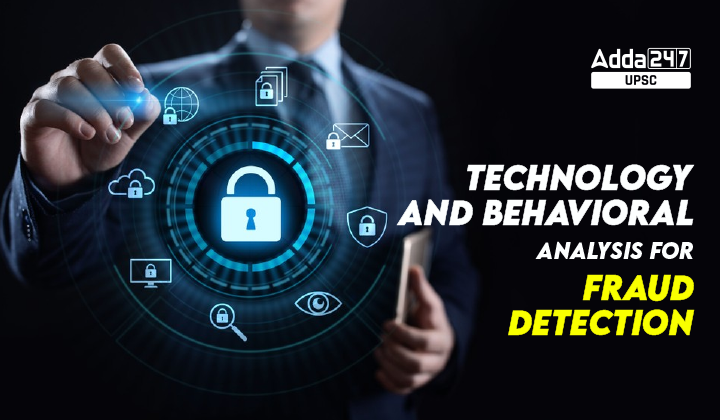Table of Contents
Context: RBI Governor Shakti Kanta Das emphasized the importance of using technology and behavioral analysis to detect anomalies in consumer behavior and prevent fraud. This includes monitoring transactions during odd hours, transactions deviating from usual patterns, and unauthorized beneficiary additions.
Relevance: GS 3 (Security, Cyber Security)
What are the potential Risks of Technology Utilization?
While technology can be beneficial, there are risks associated with its utilization without appropriate safeguards. This includes compromising customer data, invasion of privacy, and subtle manipulations based on consumer profiling.
Important Points
Need for Safeguards
Mr. Das emphasized the necessity of implementing appropriate safeguards when utilizing technology for consumer behavior analysis to mitigate potential risks.
Utilization of Artificial Intelligence
AI capabilities are being used to enhance customer service through personalized interactions, chatbots, and virtual assistants tailored to specific products. However, its deployment in fraud in fraud prevention, identification verification, vulnerability mitigation, and protection is still in the nascent stages.
Integrated ombudsman scheme
Mr. Das discussed the integrated ombudsman scheme, which entrusts the ombudsman with upholding the trust of ordinary citizens. The Ombudsman is expected to provide an independent avenue for unresolved grievances and facilitate the redress of customers’ complaints.
Improvements in the Ombudsman Framework
There have been significant improvements in the implementation of the integrated Ombudsman framework of the Reserve Bank, aiming to enhance grievance redressal processes.
Why is Cybersecurity in Financial services in important?
Financial services, such as banks, investment companies, and insurance firms, play a pivotal role in the global economy by providing vital services like lending and investment options. With the advent of digital banking and online platforms, the need for robust cybersecurity measures in this sector has escalated to safeguard sensitive information and financial assets
Significance of Cybersecurity in Financial Services
- Protection of Sensitive Information: Given their access to extensive personal and financial data, financial entities are attractive targets for cybercriminals.
- Mitigation of Financial Losses: Cyberattacks can cause immediate financial loss, compounded by the potential for regulatory penalties and harm to reputation.
- Upholding Customer Confidence: The assurance of security in financial services is essential for maintaining and gaining customer trust.
- Adherence to Regulatory Standards: Financial organizations are bound by rigorous regulations such as the BSA, Dodd-Frank Act, and PCI DSS, necessitating comprehensive cybersecurity protocols.
Key Cybersecurity Threats in Financial Services
- Phishing and Social Engineering: These tactics deceive individuals into disclosing confidential information, often through seemingly legitimate emails.
- Malware and Ransomware: This involves harmful software that interrupts operations, pilfers data, or holds data hostage for a ransom.
- DDoS Attacks: Such attacks inundate systems with excessive traffic, leading to service disruptions.
- Internal Threats: These come from within the organization and include employees who might pose security risks, whether intentionally or through carelessness.
- API Security Flaws: Poorly secured APIs can leave systems and data vulnerable to unauthorized access.
Cybersecurity Measures in Financial Services
- Web Application Firewalls (WAF): These safeguard web applications from prevalent hazards like XSS attacks and SQL injections.
- DDoS Defense: This involves the detection and diversion of suspicious traffic to mitigate the effects of DDoS attacks.
- Anti-Fraud Measures and Fraud Prevention Online: These systems employ analytics and machine learning to identify and thwart fraudulent actions.
- Identity and Access Management (IAM): This framework controls digital identities and access, ensuring that only permitted users can reach sensitive data.
- Advanced Threat Defense: This integrates multiple technologies to identify and counteract complex cyber threats.
- Vulnerability Assessment and Penetration Testing (VAPT): This process uncovers and ranks system vulnerabilities to bolster security.
- Security Education and Awareness Programs: These initiatives inform employees and clients about cyber dangers and preventive practices.
- Monitoring of Data Activities: This entails the real-time surveillance and logging of database actions to avert unauthorized access or alterations.
- Analytics of Data Risks: This proactive strategy employs data analysis to pinpoint potential hazards and threats, facilitating preemptive risk management.
Conclusion
Addressing cybersecurity in financial services demands a holistic strategy that merges technology, regulatory adherence, and educational initiatives to combat the ever-evolving landscape of cyber threats.



 TSPSC Group 1 Question Paper 2024, Downl...
TSPSC Group 1 Question Paper 2024, Downl...
 TSPSC Group 1 Answer key 2024 Out, Downl...
TSPSC Group 1 Answer key 2024 Out, Downl...
 UPSC Prelims 2024 Question Paper, Downlo...
UPSC Prelims 2024 Question Paper, Downlo...





